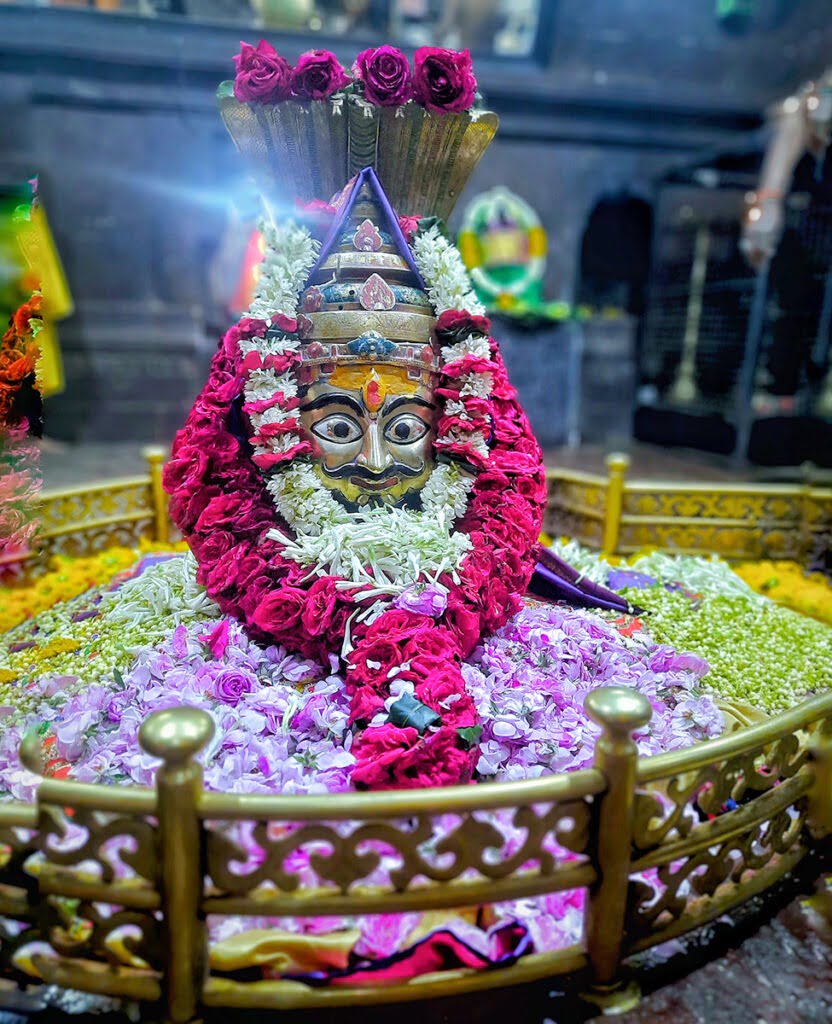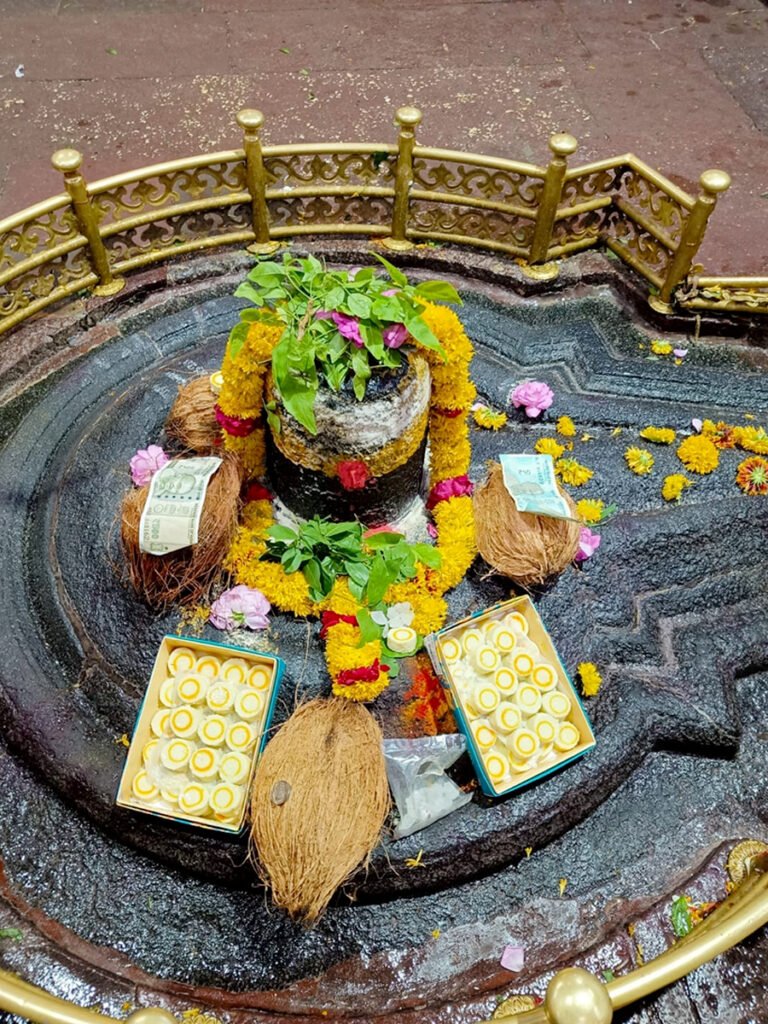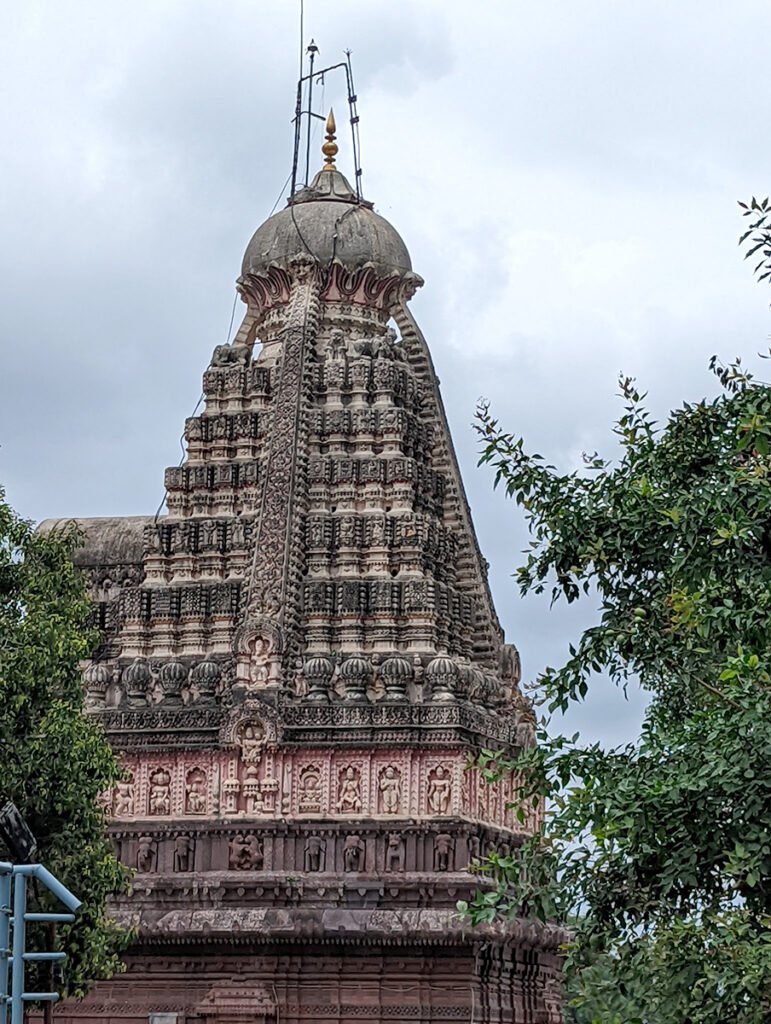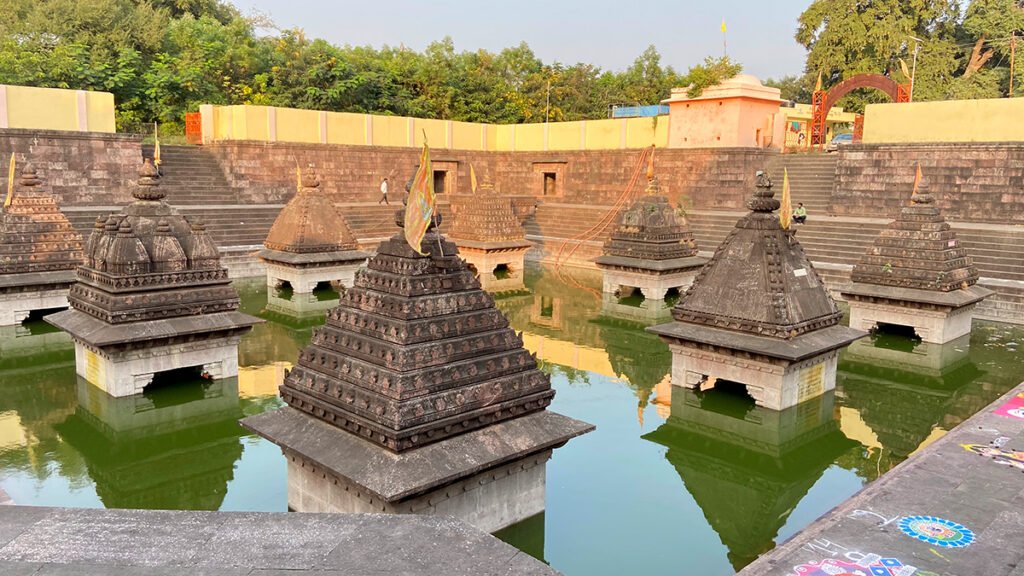Grishneshwar Temple: Wealth and Pleasure at Shiva’s Feet
Grishneshwar Temple is considered the last or 12th Jyotirlinga on the earth. It is located in a village known as Verul which is about 30 km. west side of Aurangabad. It was built in the 18th century.

Contents
History of Grishneshwar Temple:
Originally this place was a settlement of Naga tribes also known as “varul” in the local Marathi language. Gradually this was changed to “Verul”. It is located on the banks of yelaganga. Once there was a capital city named “Yelapur, or Yelur or Verul” which was ruled by a king named “Yela”.
Once he went hunting in the forest where he killed animals living with saints, angered by his killings saints cursed the king for getting infested with insects. With thirst King began wandering the forest, at last, he found water made with hooves of a horse. When he began to drink that water there was a miracle, his body got rid of insects. Then the king started severe penance (Tapa) by which Lord Brahma blessed him and installed Parastha teerth also called Brahma Sarovar or Shivalay.
Read More>> Naina Devi Temple Bilaspur
There is another story behind Shivalay:
Once Lord Shiva and Parvathi were playing chess on Mount Kailas, Parvathi checkmated lord, Shiva. Mahadev got angry and went to the Sahyadri range filled with cool breezes. Searching Lord, Parvathi came there in the form of a tribal girl who won the heart of the lord and spent some time happily. One day Parvathi was thirsty, Shankara pierced the earth with this trident and made patala (nether world) water ooze out.
Once Parvathi was about to fill her hair parting with vermillion and saffron in kamyavana. She kept them in her left palm and started mixing them with shivalay water with her right thumb. A miracle happened, Shiv Ling with great light appeared. When Parvathi got shocked, Lord Shiva explained that “This linga was hidden in pathala (nether world), it was removed when I stuck earth with my trident”, and it emerged out as a bubble along the water. Parvathi kept this light in the stone linga and installed it there. As this was made by Goddess Parvathi with the friction of her thumb, she gave the name Grishneshwara. (Grishna means friction)
Once Bhosale (chief of Verul), is an ardent devotee of Lord Shiva. He found a treasure hidden in a snake pit by the grace of lord Grishneswar. He spent whole money to renovate the temple and also built a lake named “Shikharshinganapur”. It is believed that Bholenath himself was birth in the shosale family and made this place famous.
In the later period, Goutamibai and Ahilyadevi Holkar renovated this temple. It is built with 240×185 dimensions. Grishneshwar Jyotirlinga is built with red rocks and has a five-tier shikara. It is sculptured with many Indian gods and goddesses. It is beautiful and still stands strong which resembles our ancient architectural skills. A donor named Jayaram Bhatia got a copper tower with gold sheeting. The Garbhagriha measures 17 ft x 17 ft. A court hall is built on 24 pillars which are embedded with beautiful carvings. The Lingamurthy faces east where you find Nandikeshwara in the court hall.
If anyone wants to enter garbagriha they have to undress and go. During day time we find twelve drums are played and arati is performed. Of 21 Ganesha Peethas, one is famous by the name Lakshavinayaka. First, visit Laksha Vinayaka shrine where you find echoes of the chanting of Lord Shiva’s name.
“Visiting Grishneshwar Temple, you will be blessed with wealth and pleasure.”
Read More>> Shirdi Sai Baba Temple Maharashtra

Significance of Grishneshwar Temple:
This temple holds importance for the following reasons also. First, it is one of the very few Jyotirlingas temples where its Shiva Linga is in the east direction. This is considered to be a very auspicious arrangement for any temple. For another reason, the present temple marks the place where the Lord Shiva manifested himself as a pillar of light with the aim of resolving the controversy between Lord Brahma and Lord Vishnu. Third, it is associated with the legend of Grishna, a devotee of Lord Shiva who became rich and prosperous by visiting the temple.
Grishneshwar Temple is also one of the most visited places by the Hindus throughout India. Also, tourists are not sparing visits to this temple since it is just next to the famous Ellora Caves, a UNESCO World Heritage Site.
There are some real benefits which the devotees attain after visiting the Grishneshwar Temple.
Money and prosperity
Good health and wellbeing
Problems and crisis Removing
Desires fulfilled
Spiritual enlightenment and liberation
Read More>> Mahamaya Shakti Peeth Amarnath
Mystery of Grishneshwar Jyotirlinga:
Legend of Kusuma:
There is a legend that once, there lived a religious woman by name Kusuma who used to live near the jyotirlinga. Every day she used to bathe a Shiva linga in the nearby water-tank to please God Shiva and repent for all those sins that had been committed. Not even the disaster she suffered shook her from faith.
One day, her husband’s first wife murdered her son. This was a huge blow to her, but she never allowed her faith to lapse. She went on doing all her daily rituals and waiting for miracles.
She is said to have been so devoted that it pleased Lord Shiva, who then manifested himself before her and revived her son. Overjoyed at her gratitude, Kusuma requested Lord Shiva to dwell there and Lord Shiva Blessed her boon.
The Brahma Kund: Legend also has it that Lord Shiva emerged from the holy pond called Brahma Kund located near the temple.
The Vermilion God: Yet, another legend associates the name “Grishneshwar Jyotirlinga” with the goddess Parvati. Apparently, she has prepared the linga from the vermillion powder of the Brahma Kund.

Places to visit near Grishneshwar Temple:
Ellora Caves: The Ellora caves are at walkable distance from Grishneshwar Temple, that is located on the UNESCO World Heritage Site. Ellora Caves is a series of rock-cut temples, monasteries, and great sculptures where the architecture of Buddhists, Hindus, and Jain blends; the most famous one here is Kailash Temple.
Ajanta Caves: – Ajanta caves is one of the world heritage sites of UNESCO; Unlike Ellora these caves are worth seeing as the sculptures belong to 2nd Century. One can check strong devotion and skill of the workers who crafted Buddhist sculptures. One can also see popular Buddhist rock-cut cave paintings.
Daulatabad Fort: Popularly known as Devagiri Fort is the ancient defense mechanisms and interesting architecture of Chand Minar, a towering structure can be seen here.
The old town is Aurangabad, 30 km from Grishneshwar. There’s much to keep an interested visitor occupied in the morning: the interesting Bibi Ka Maqbara-the tomb that goes by the nickname “poor man’s Taj Mahal”-and such additional historical treasures as the Panchakki (the water mill) and several museums.
Bhadra Maruti Temple Khuldabad – 12 kms from Grishneshwar Bhadra Maruti temple is one of the major pilgrim places devoted to Lord Hanuman. It is also well-known for the statue of Lord Hanuman lying on the floor.
Ghrishneshwar Lake: Just outside the temple, lays a peaceful and picturesque Ghrishneshwar Lake. The lake allows lying back in stillness and enjoying and taking enough photography.

How to reach Grishneshwar Temple:
By Air:
The nearest major airport: Chikkalthana Airport.
Distance: Approx. 30 kilometers.
By Train:
The nearest railway station: Aurangabad Railway Station
By Road:
You can also reach the temple by road. Several state and private buses are available up to the temple. You can hire a taxi or use a local auto-rickshaw to reach there, as the temple is around 11 kilometers from Aurangabad. To find your destination using a GPS or these general directions :
Drive on Daulatabad Road from Aurangabad.
Then, journey on Daulatabad Road to reach Verul.
You can also find signboards towards Grishneshwar Temple.
Local Transport: Once you reach the vicinity of the temple, you can use local auto-rickshaws or cycle rickshaws to reach Grishneshwar Jyotirlinga complex. The temple is a short distance from the parking area, and you can easily walk to it.
